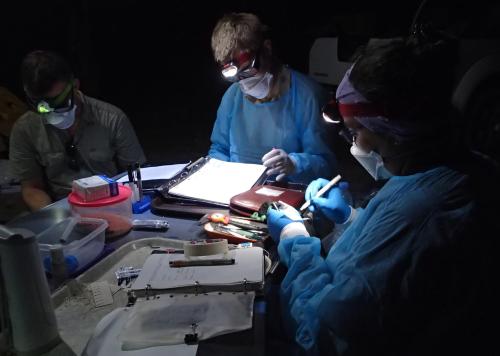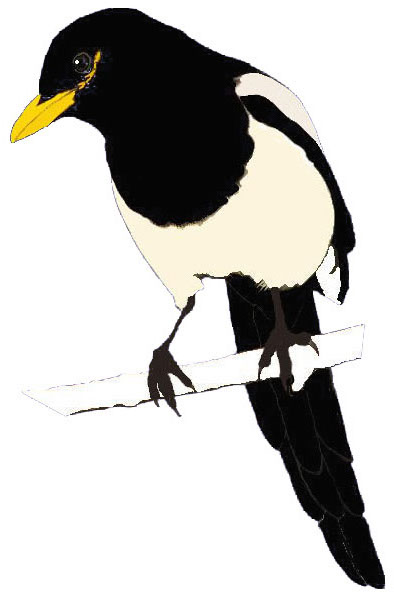Cambodia
Cambodia

The Cambodia Bat Rat (CamBatRat) project is a zoonotic disease surveillance research effort studying bats and rats as vectors of arbovirus and zoonosis. Established in 2016, its main objectives are to identify potential spillover events and disease dynamics and to build a disease surveillance tool that can be utilized globally. This project is funded by the United States Defense Threat Reduction Agency and is carried out in partnership with Duke NUS Medical School, Flora and Fauna International, the Cambodian Ministry of Agriculture, Forestry and Fisheries, the Museum of Wildlife and Fish Biology at UC Davis, and involves researchers from the Royal University of Phnom Penh, and the Prince of Songkla University, Thailand. Alan T. Hitch, an Associate Specialist at the MWFB, is the animal ecologist leading the field team of this project.
From 2016 through 2020, the team collected rodent and bat specimens from 250 sites across Cambodia. Capturing and sampling methods included live-capture cage-style small mammal traps, mist nets, and acoustic detectors that recorded bat calls. Researchers sampled the mammals’ blood and tissues to identify any pathogens. The MWFB worked with project biologists to create a synoptic series of museum specimens to voucher all of the species sampled. Alan Hitch is responsible for building distribution maps and using quantitative methods to estimate the probability of these animals’ occurrence in human-populated habitats. His work allows researchers to target specific locations where pathogens are found, allowing quick responses to disease outbreaks.
The project’s comprehensive surveys have acquired a large amount of ecological data about the fauna of Cambodia. More than 9,000 animals have been sampled, and 1,000 vouchered as museum specimens (study skins, fluid preserved, and complete skeletons). Many of the areas have never before been sampled by biologists and these specimens are the first biogeographic vouchers. This collection will prove invaluable to documenting and understanding the biogeography, ecology and natural history of rodents and bats in this region. In addition to great quantities of information acquired from the surveys, bat calls recorded across 250 nights have contributed to the development of a unique algorithm-based identification program; the first of its kind for Southeast Asia. Better understanding of bat communities, an integral part of the ecology of many Southeastern Asian countries, is valuable to their conservation and management.
With the fieldwork already completed, Hitch and the other researchers are currently working on final species determinations and data analysis. The success of the project has granted the team funding to conduct similar surveys in the southern provinces of Laos, with the possibility of extending research to other countries in the region.
Publications
Furey, N. M, Tu, V. T., Hitch, A. T., Pimsai, A., Kimashalen, C., Vuthy, B., Raksmey, Y., Sarak, C., Borthwick, S. A., Ch'ng, L., Sinly, S., Csorba, G., Saveng, I., Smith, G. J. D., Dany, C., and Mendenhall, I. H. First Records of Seemingly Rare Bats (Mammalia: Chiroptera) in Cambodia, with a Revised Checklist of Species for the Country. Acta Chiropterologica. 2022, Vol. 23, No. 2: 345-369.
